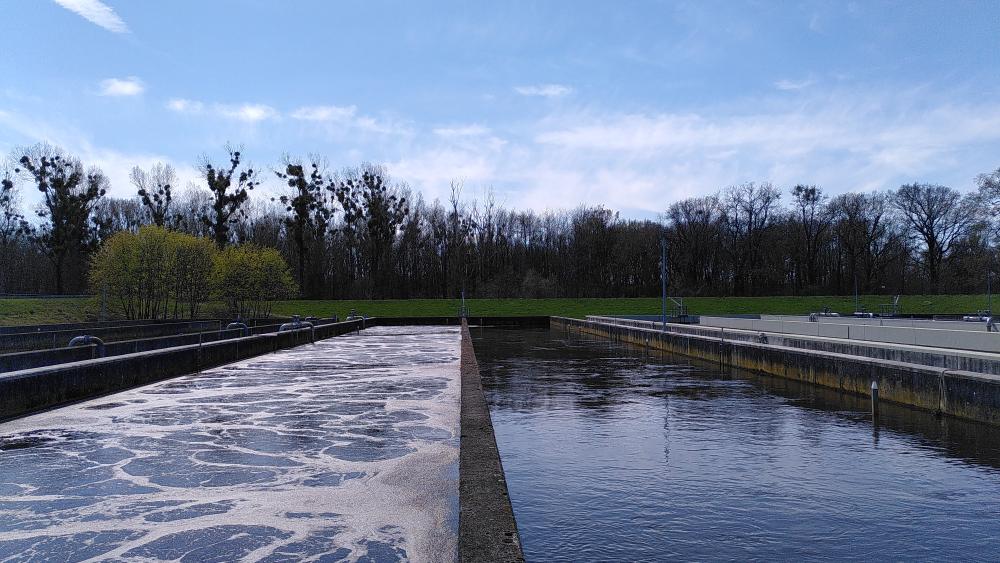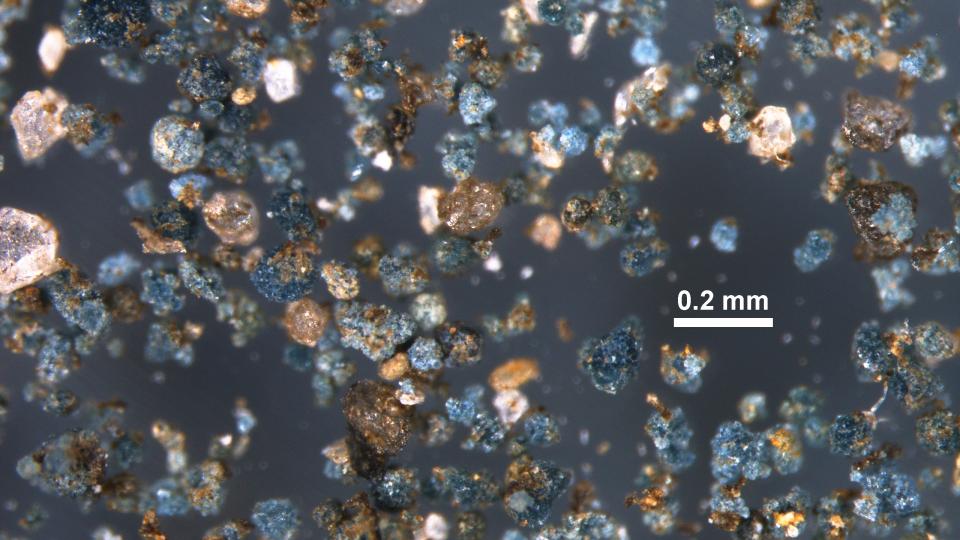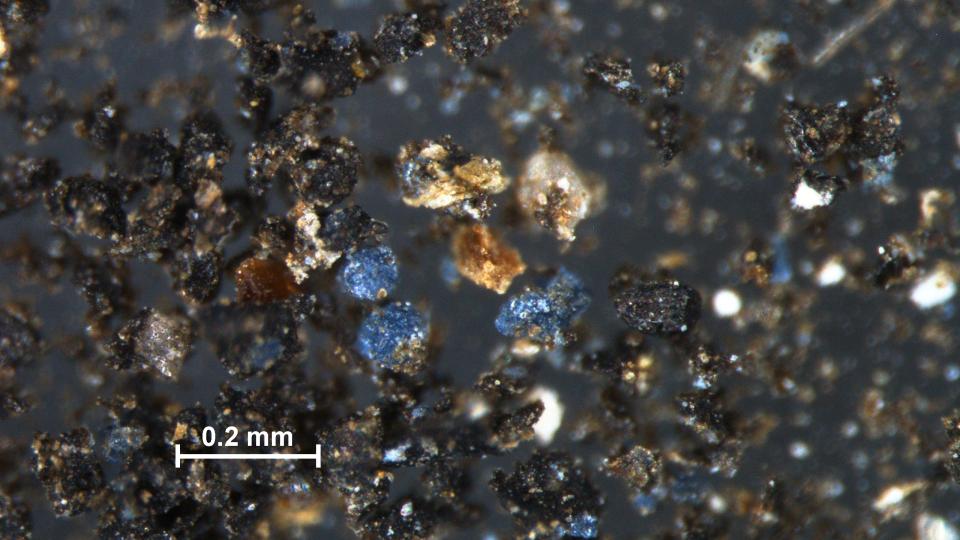
Doctoral student Lena Heinrich also took her samples at the Münchehofe wastewater treatment plant to study the formation of vivianite. | Photo: Lena Heinrich
There are many good reasons to recycle phosphorus: Rock phosphates are increasingly contaminated and supply depends on a few countries. That's why it has been on the European Union's list of "critical raw materials" since 2014. And the German government also passed the Sewage Sludge Ordinance in 2017: According to it, by 2032, larger plant operators are to ensure that the phosphorus contained in sewage sludge is recovered.
Precipitation in sewage sludge can produce vivianite – an iron-phosphorus compound from which phosphorus can be relatively easily recycled. "But until now, it wasn't clear what conditions in sewage treatment plants favor vivianite formation. We are also interested in this for lake restoration, where precipitation of phosphorus from water is also used to reduce nutrient loads and thus improve water quality," explained IGB researcher Michael Hupfer, who led the study. The team analyzed the properties and compositions of sludge samples from 16 wastewater treatment plants, as well as the plants' process parameters, to determine the factors influencing vivianite formation.
High iron content favors, high sulfur content reduces vivianite formation
High iron content proved to be the most important factor in favoring vivianite formation. High sulfur content, in turn, decreased vivianite formation. "There are sulfur-containing and sulfur-free precipitants. We were able to show by comparison that the use of sulfur-containing precipitants can increase the sulfur content in the sludge and thus counteract vivianite formation. The choice of precipitant can therefore have a significant influence on phosphorus recycling," said IGB doctoral student Lena Heinrich, lead author of the study.
Adjusting the conditions can make a difference: In the 16 wastewater treatment plants, the proportion of phosphorus bound in vivianite varied from around 10 to as much as 50 percent. This range shows the great potential to increase the yield of vivianite. "For us as aquatic ecologists, the findings are very important because iron-containing precipitants can also be considered for restoration of lakes that are eutrophic or polluted with nutrients. The efficiency of an iron salt addition is much greater if it results in the formation of stable vivianite in the sediment, which is then – perhaps one day – also available for the recovery of phosphorus" is how Michael Hupfer commented on the results.
Formation of vivianite in digested sludge and its controlling factors in municipal wastewater treatment

Sewage sludge as an important source of phosphorus. | Photo: shutterstock_18057122724

Phosphorus in the form of vivianite. | Photo: Lena Heinrich

Phosphorus in the form of vivianite. | Photo: Lena Heinrich






